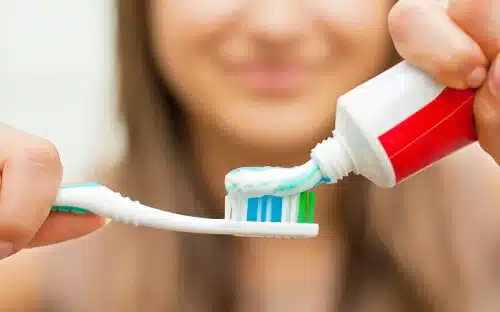Keep Cool and Get Relief from Tooth Sensitivity
Cold foods can make your sensitive teeth feel like a hot mess. Here are some tips to keep your mouth happy this summer.
Whether it’s a tall glass of iced tea or your favorite ice cream cone, everyone has their go-to summer treat to help them cool down. When tooth sensitivity gets in the way of enjoying your favorite summertime snack, it can be a real pain.
When the protective enamel layer on your teeth is worn or broken, dentin is exposed. Dentin is much like our bones in that it is hard, yet porous. It is made of tiny tubules that act as pathways to the pulp and nerve of the tooth. Tubules send signals to the nerve in the form of pain to let you know that the protective enamel is no longer there. The result is a zing of pain when you eat something too cold or too hot.

Tooth sensitivity and damaged enamel have many causes. Some of the most common are:
- Clenching and grinding – Bruxism causes the thin layer of enamel at the gumline to shear off, exposing the dentin.
- Acidic diet – A diet heavy in acidic foods like citrus fruits and soda can erode enamel.
- Acid reflux – Reflux occurs when stomach acid backs up into the esophagus. If this is a chronic condition, the acids can wear away tooth enamel.
- Tooth decay – A small cavity in the enamel of a tooth is generally an easy fix, but if ignored, the decay will eat away at the enamel into the dentin, causing pain.
- Hard-bristled toothbrushes or brushing too hard — Using a hard-bristled toothbrush or using too much force when you brush can abrade tooth enamel and expose dentin.
- Fractured teeth or worn or missing fillings – A broken tooth or worn or broken fillings allow liquids, saliva, and food particles to seep into the crack or hole in your tooth, causing discomfort. Even a small fracture can cause a lot of pain.
- Gum disease – Periodontal disease causes the gums to shrink back. The roots of our teeth are much softer than enamel and are much more susceptible to decay. When gum disease is present, the gums recede, exposing this sensitive area that can cause extreme sensitivity even when breathing cold air.

Approximately 1 in 8 people experience periodic tooth sensitivity. Fortunately, there are also many ways to treat tooth sensitivity that are quick, painless, and cost-effective. Depending on the level of sensitivity and the cause, your dentist may recommend a desensitizing toothpaste or fluoride gel as a first step to help ease the pain. There are many on the market today with varying strengths. If the cause is due to clenching or grinding, you may need to wear an appliance at night to prevent further damage to your teeth. Sometimes, more involved procedures are necessary to alleviate sensitivity. Root canals, gum grafts, or a crown may be needed to fix the problem.
In many cases, tooth sensitivity can be avoided by using the softest toothbrush recommended by your dentist, limiting acidic foods, gentle brushing (not scrubbing), flossing regularly, and seeing your hygienist for professional cleanings at least every six months. By working together with your dental professionals, you can enjoy your favorite summer treat, and that’s a great reason to smile.






